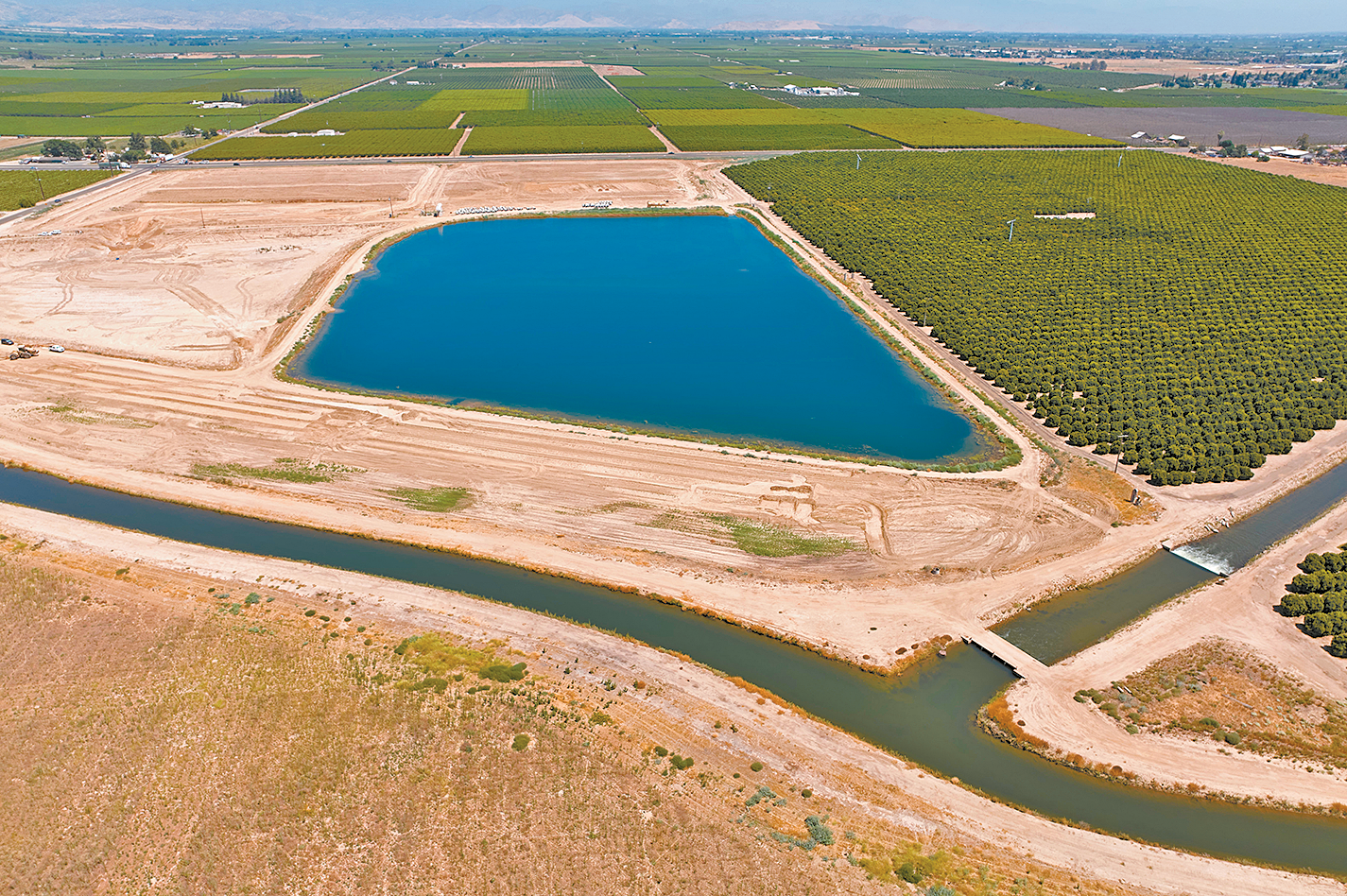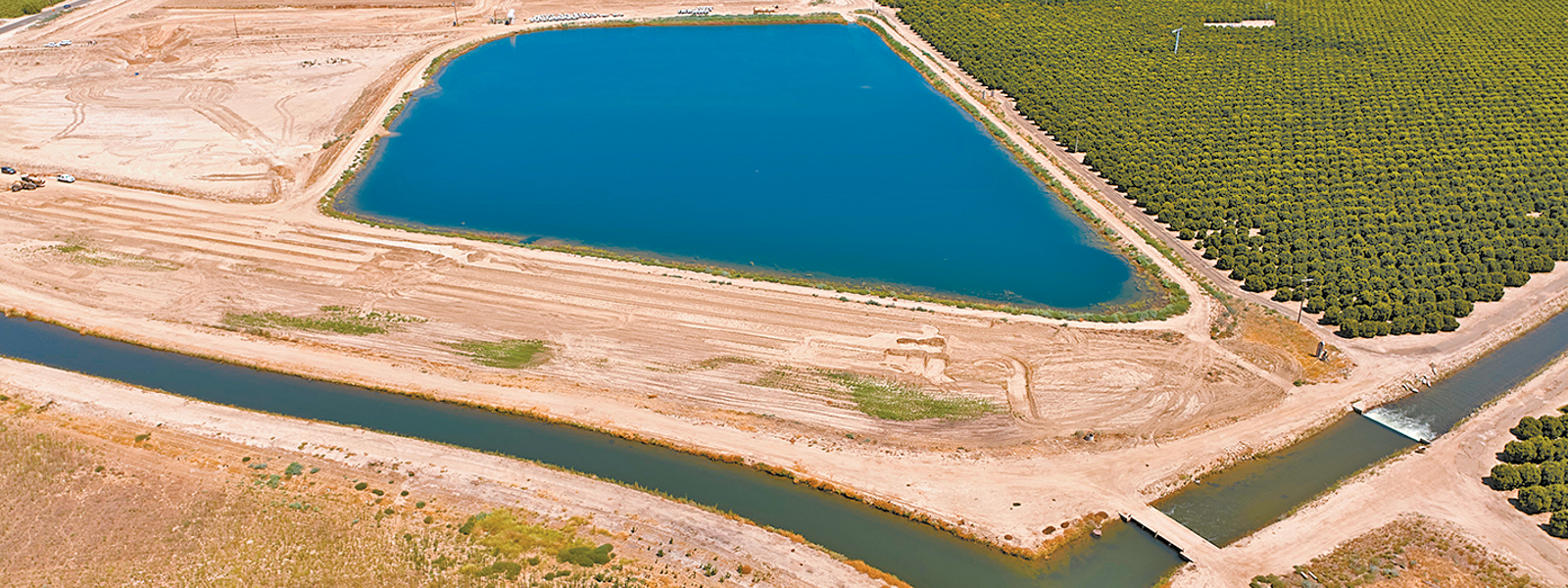Commentary: Farmers need support in rollout of groundwater law

In Fresno County, farmland was converted to a groundwater recharge basin to help replenish the aquifer. Water districts and farmers are working on solutions to bring aquifer supplies into balance.
Photo/California Department of Water Resources


By Justin Fredrickson
A Public Policy Institute of California report last month warned of historic challenges for the state’s leading agricultural region under the Sustainable Groundwater Management Act.
The report, “Managing Water and Farmland Transitions in the San Joaquin Valley,” drills down on previous PPIC work in an update that reminds us of the sheer scope and magnitude of what is at stake as the 2014 groundwater law is implemented.
Under SGMA, the report estimates average annual water supply for farm irrigation is expected to drop by 20% by 2040. The PPIC said the impacts could result in the retirement of 500,000 acres of irrigated farmland annually and up to 900,000 acres in a worst-case scenario.
The difference between the high and low ends is dependent to a significant extent on efforts to promote water trading. This is examined at different scales—local trading, basin-level trading and valley-wide trading.
The idea here is simple: Given inherent practical limits on existing and potential new supplies, the more that water can be moved, the less the economic hit to the valley.
However, there are real-world physical, institutional and political limits at play, along with some major related tradeoffs.
SGMA will force a reshuffling of the valley’s historic, agricultural deck. It will mean choices between annual and perennial crops, feed crops and row crops. Areas without surface water will face different choices from those that have it. Already growing disparities in land values will widen. This will impact jobs and communities.
The PPIC delves into agriculture “transitioning” or “adaptation” strategies. It explores whether farmers growing more profitable vegetables, fruits and nuts may seek to buy water from those growing less profitable alfalfa or cotton. It examines potential downstream effects on dairies and livestock, and considers scenarios involving farmland leaving production for solar power, housing or other uses.
The PPIC weighs options to protect domestic wells and ensure drinking water for disadvantaged communities and to address land subsidence impacting the capacity of canals and aqueducts to move surface water. The report notes that groundwater law’s impact won’t be uniform across the San Joaquin Valley. In fact, things will look different in different places.
The report views potential changes in the valley largely through an impersonal lens of economic efficiency. Yet, the human impact of SGMA on rural communities and farming and ranching families will be enormous.
But we are seeing a brighter story emerging from locally driven efforts to meet the challenge. After atmospheric river storms and flooding this year, farmers dramatically accelerated groundwater recharge efforts, seizing the opportunity to replenish aquifers. Growers are making on-farm improvements and upgrading management practices. Others are reducing water use through “land repurposing”—transitioning acreage for habitat protection or nonagricultural uses such as solar power.
The institutional and economic glue to stick this all together is taking shape. At the same time, local groundwater sustainability agencies are reworking plans to bring aquifers into balance and stave off potential state intervention. We are seeing a surge of collaboration as longtime antagonists in the water world seek solutions to our groundwater challenges.
On the frontlines are local water managers and our innovative and resourceful valley farmers, ranchers and dairy producers. They are working toward creative, meaningful and resilient solutions.
Local implementation of SGMA is a serious challenge that is going to require considerable support as solutions take shape. There will be bumps in the road, so patience, calm headedness and long-term perspective are needed.
It is important that farmers and ranchers get necessary financial and technical assistance as they transition to meet requirements of the law. It’s also important that state and local agencies stay the course with consistent policies, including regulatory flexibility to help along the way. After all, the rest of us have a vested interest: We eat.
Elected officials and state policymakers in places far removed from agricultural regions should understand the sacrifice and initiative of farmers and ranchers, and recognize the hard work of local groundwater agencies to meet the challenges. They should encourage and support local solutions and realize that the best help sometimes means getting out of the way.
At the end of the day, local agricultural communities in the valley will live with the real-world consequences of the roll-out and implementation of SGMA. This measure represents the course set by our elected representatives in the state Legislature and—by extension—the people of California. Government programs and policies need to support this hard transition to groundwater sustainability.
(Justin Fredrickson is a water and environmental policy analyst for the California Farm Bureau. He may be contacted at jef@cfbf.com.)




